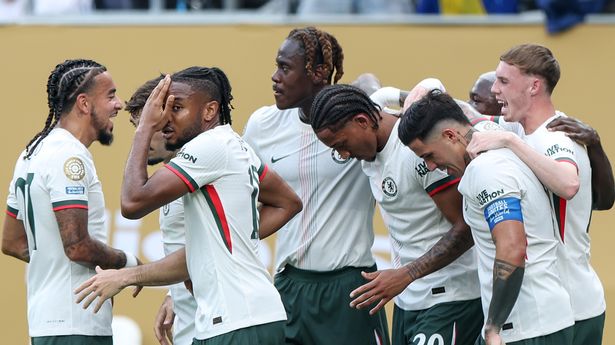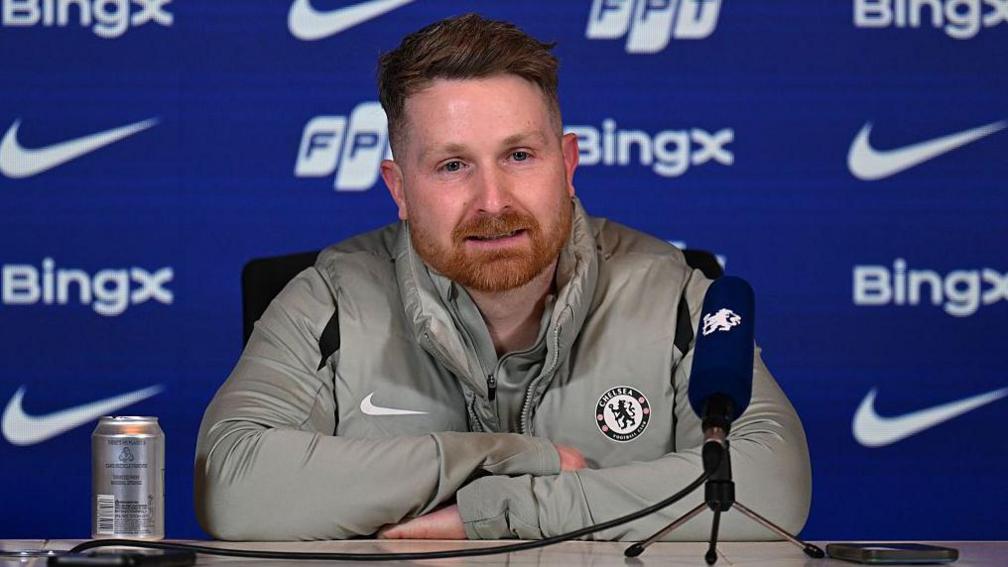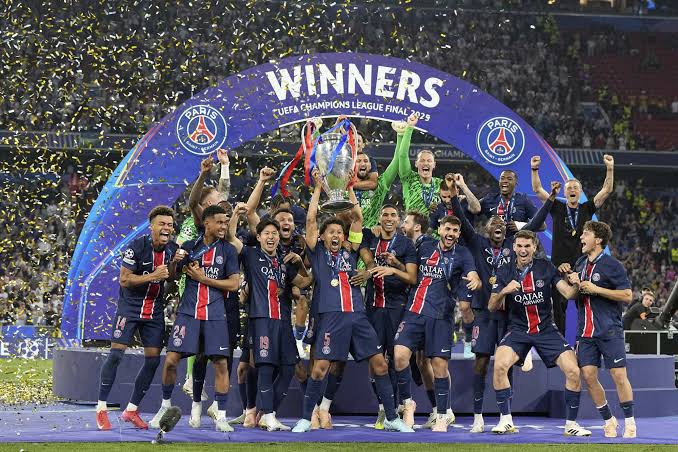2025 FIFA CWC Final: How Enzo Maresca’s Chelsea can defeat PSG

Chelsea reach FIFA Club World Cup final after stunning run—Pedro strikes twice in semifinal win
On July 13, 2025, Chelsea face Paris Saint-Germain (PSG) in the FIFA Club World Cup final at MetLife Stadium, a clash of European titans vying for the $125 million prize and global supremacy. PSG, the reigning Champions League winners, have been a juggernaut, demolishing Real Madrid 4-0 in the semifinals with a high-pressing, fast-breaking attack led by Ousmane Dembele, Fabian Ruiz, and Khvicha Kvaratskhelia. Chelsea, under Enzo Maresca’s transformative leadership, have surged to the final with a 2-0 win over Fluminense, driven by Joao Pedro’s debut heroics. With PSG’s 48 wins in 2024/25 and Chelsea’s 12 tournament goals, this final is set to be a tactical chess match. This piece explores how Maresca’s Chelsea can tactically outmaneuver PSG, leveraging their strengths, exploiting PSG’s weaknesses, and navigating injury challenges.
Maresca’s tactical philosophy for Chelsea
Maresca’s 4-2-3-1, changing into a 3-box-3 in possession, has been Chelsea’s cornerstone, averaging 59% possession in the 2024/25 Premier League and 61% in the Club World Cup, per The Analyst. His high press and 312 high turnovers force errors from opposition. Against Fluminense, Chelsea’s six fast-break goals, led by Pedro Neto’s three strikes, showcased their counter-attacking ability. Cole Palmer’s 3.2 key passes per 90 and Joao Pedro’s versatility as a false nine, dropping deep to link play, give Chelsea flexibility. However, a 3-1 group-stage loss to Flamengo exposed vulnerabilities when Maresca’s inverted full-back experiment faltered.
To defeat PSG, Chelsea must refine this system. It is suggested that a mid-low block with zonal marking to neutralize PSG’s early attack. Avoiding an inverted Cucurella and keeping Reece James flat could stabilize the flanks, while a midfield trio of Enzo Fernandez, Romeo Lavia, and Moises Caceido could match PSG’s intensity. Chelsea’s 17 blocked crosses and 7.2 corners per game provide set-piece threats, per Squawka, which is crucial against PSG’s high line.
RELATED STORIES
Enzo Maresca: How Italian tactical maestro has reshaped Chelsea
Exploiting PSG’s weaknesses
PSG’s 4-3-3, under Luis Enrique, is a “purring, seamless winning machine,” with 78% possession and 10 shots in the first half against Real Madrid. Their high press and wing play, driven by Achraf Hakimi (2.32 key passes per 90) and Kvaratskhelia (3 FIFA CWC goals), have yielded 14 goals and one conceded in six tournament games. However, their high line, exposed by Botafogo’s 1-0 group-stage upset, is vulnerable to quick counters. Botafogo’s compact midfield frustrated PSG’s early attacks, a tactic Chelsea could emulate.
Chelsea’s pacey wingers, Neto and Noni Madueke, can exploit gaps behind Hakimi and Nuno Mendes when they push forward. Joao Pedro’s ability to win the ball high, as seen in his Fluminense goals, could disrupt Marquinhos and Lucas Beraldo, forcing Hakimi to drop. PSG’s nine-man Bayern win showed resilience but also defensive fragility when stretched. Chelsea’s 6 fast-break goals, align perfectly with this weakness, especially with long passes to bypass PSG’s press.
Midfield battle: The key to victory for Chelsea
PSG’s midfield, led by Fabian Ruiz (2 goals vs Real Madrid) and Vitinha (98% passing accuracy), is their engine. Chelsea’s double pivot of Fernandez and Caicedo, with Lavia or Dewsbury-Hall adding legs, must disrupt this rhythm. A 4-1-2-1-2 diamond is best suggested for the Blues to overload PSG’s midfield, with Lavia and Fernandez providing defensive cover for Palmer’s creativity. Caicedo’s potential absence due to an ankle injury from the Fluminense match is a blow, but Madueke’s tackles per 90 offer dynamism.
Chelsea’s 312 high turnovers, per Squawka, can target Vitinha’s occasional loose passes under pressure, as seen against Botafogo. By holding firm for the first 30 minutes, Chelsea can blunt PSG’s early onslaught. Palmer, operating in the right half-space, must evade Joao Neves’ pressing to link with Joao Pedro, whose 2 goals against Fluminense show his clutch finishing.
Defensive solidity and set-piece threats
Chelsea’s defense, rocked by suspensions (Colwill) and injuries (Fofana, Caicedo doubtful), relies on Trevoh Chalobah and Tosin Adarabioyo, who held firm against Palmeiras. Facing PSG’s Dembele, Doue, and Kvaratskhelia, Chelsea must avoid Real Madrid’s fate, where Asencio and Rudiger’s errors gifted early goals. A mid-low block, is suggested to limit PSG’s wingers, with Cucurella tasked to track Hakimi’s runs.
Set pieces are Chelsea’s trump card. Their 7.2 corners per game and 17 blocked crosses, per Squawka, can exploit PSG’s 5.6 corners conceded. Chalobah’s aerial presence and Palmer’s delivery could target Beraldo’s 62% aerial duel success rate, per SofascoreBR. A set-piece goal, as seen in Chelsea’s 2-0 Fluminense win, could be decisive.
RELATED STORIES
Five Improvements Maresca has made in Chelsea
Liam Delap or Nicolas Jackson: Who should lead Chelsea’s attack?
Injury challenges and squad depth
Chelsea’s injury list: Fofana, Caicedo, and Badiashile is a concern. Caicedo’s ankle injury, sustained against Fluminense, leaves him “walking gingerly,” per The Athletic, forcing Maresca to rely on Dewsbury-Hall. PSG, without suspended Pacho and Hernandez, start Beraldo and Marquinhos. Chelsea’s depth, with 12 players contributing goals/assists, gives them an edge over PSG’s reliance on Dembele, Kvaratskhelia, and Ruiz. Maresca’s adaptability, switching to a 3-5-2 against Benfica, could counter PSG’s intensity.
Final take
To defeat PSG in the 2025 FIFA Club World Cup final, Chelsea must deploy a disciplined mid-low block to absorb early pressure, as Botafogo did. A 4-1-2-1-2 diamond, with Lavia and Fernandez shielding Palmer, can control midfield. Neto and Pedro’s pace can exploit PSG’s high line, while set pieces offer a scoring avenue. Despite injuries, Maresca’s adaptability and Chelsea’s 12 goal contributors provide hope. Facing PSG’s absolute machine, Chelsea need a near-perfect performance. If they execute Maresca’s plan: reduce counters, and strike from set pieces, they can upset the odds, claim the $125 million prize, and etch their name in history as two-time Club World Cup champions.




